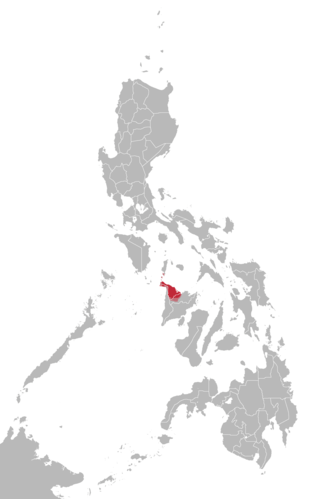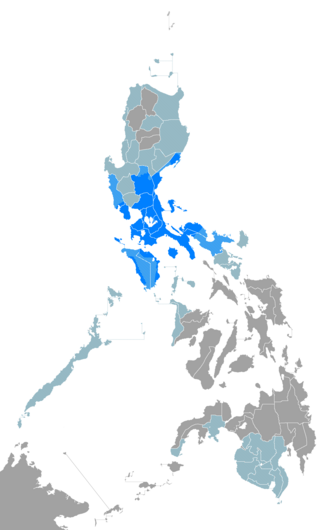
Tagalog is an Austronesian language spoken as a first language by the ethnic Tagalog people, who make up a quarter of the population of the Philippines, and as a second language by the majority, mostly as or through Filipino. Its standardized, codified, national or nationalized, intellectualized, more linguistically inclusive, more linguistically dynamic, and expanded or broaden form, officially named Filipino, is the national language of the Philippines, and is one of the latter's two official languages, alongside English. Tagalog, like the other and as one of the regional languages of the Philippines, which majority are Austronesian, is one of the auxiliary official languages of the Philippines in the regions and also one of the auxiliary media of instruction therein.
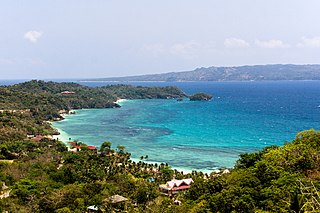
Aklan, officially the Province of Aklan, is a province in the Western Visayas region of the Philippines. Its capital and largest town is Kalibo. The province is situated in the northwest portion of Panay Island, bordering Antique to the southwest, and Capiz to the southeast. Aklan faces the Sibuyan Sea and Romblon province to the north.

Western Visayas is an administrative region in the Philippines, numerically designated as Region VI. The region comprises the islands of Panay and Guimaras. It consists of five provinces: Aklan, Antique, Capiz, and Iloilo on Panay, and the island province of Guimaras. The region also includes one highly urbanized city, Iloilo City, which is the largest city and serves as the regional center.
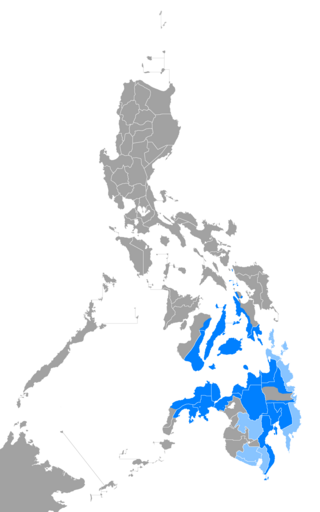
Cebuano is an Austronesian language spoken in the southern Philippines. It is natively, though informally, called by its generic term Bisayâ or Binisayâ and sometimes referred to in English sources as Cebuan. It is spoken by the Visayan ethnolinguistic groups native to the islands of Cebu, Bohol, Siquijor, the eastern half of Negros, the western half of Leyte, and the northern coastal areas of Northern Mindanao and the eastern part of Zamboanga del Norte due to Spanish settlements during the 18th century. In modern times, it has also spread to the Davao Region, Cotabato, Camiguin, parts of the Dinagat Islands, and the lowland regions of Caraga, often displacing native languages in those areas.

The close-mid back unrounded vowel, or high-mid back unrounded vowel, is a type of vowel sound, used in some spoken languages. Its symbol in the International Phonetic Alphabet is ⟨ɤ⟩, called "ram's horn." This symbol is distinct from the symbol for the voiced velar fricative, ⟨ɣ⟩, which has a descender, but some texts use this symbol for the voiced velar fricative.

The Bisayan languages or Visayan languages are a subgroup of the Austronesian languages spoken in the Philippines. They are most closely related to Tagalog and the Bikol languages, all of which are part of the Central Philippine languages. Most Bisayan languages are spoken in the whole Visayas section of the country, but they are also spoken in the southern part of the Bicol Region, islands south of Luzon, such as those that make up Romblon, most of the areas of Mindanao and the province of Sulu located southwest of Mindanao. Some residents of Metro Manila also speak one of the Bisayan languages.

Tausūg is an Austronesian language spoken in the province of Sulu in the Philippines and in the eastern area of the state of Sabah, Malaysia as well as in the Nunukan Regency, province of North Kalimantan, Indonesia by the Tausūg people. It is widely spoken in the Sulu Archipelago, the Zamboanga Peninsula, southern Palawan, Malaysia and Indonesia.

Maranao is an Austronesian language spoken by the Maranao people in the provinces of Lanao del Sur and Lanao del Norte and the cities of Marawi and Iligan City in the Philippines, as well as in Sabah, Malaysia. It is a subgroup of the Danao languages of the Moros in the Bangsamoro Autonomous Region in Muslim Mindanao.
The Central Philippine languages are the most geographically widespread demonstrated group of languages in the Philippines, being spoken in southern Luzon, Visayas, Mindanao, and Sulu. They are also the most populous, including Tagalog, Bikol, and the major Visayan languages Cebuano, Hiligaynon, Waray, Kinaray-a, and Tausug, with some forty languages all together.

The Philippine languages or Philippinic are a proposed group by R. David Paul Zorc (1986) and Robert Blust that include all the languages of the Philippines and northern Sulawesi, Indonesia—except Sama–Bajaw and the Molbog language—and form a subfamily of Austronesian languages. Although the Philippines is near the center of Austronesian expansion from Taiwan, there is relatively little linguistic diversity among the approximately 150 Philippine languages, suggesting that earlier diversity has been erased by the spread of the ancestor of the modern Philippine languages.
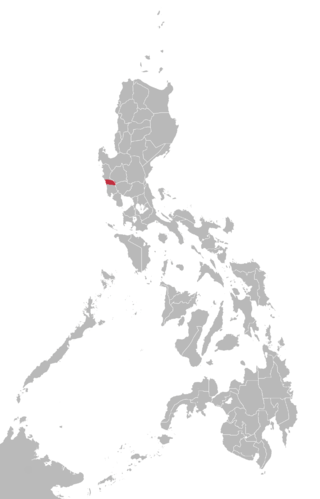
Botolan is a Sambalic language spoken by 32,867 Sambal, primarily in the Zambal municipalities of Botolan and Cabangan in the Philippines. Language status is 5 (developing).
Klata is an Austronesian language of the southern Philippines. It is spoken on the eastern slopes of Mount Apo in Davao del Sur Province, as well as in Davao City (Ethnologue) in an area stretching from Catalunan to Calinan.
The Proto-Philippine language is a reconstructed ancestral proto-language of the Philippine languages, a proposed subgroup of the Austronesian languages which includes all languages within the Philippines as well as those within the northern portions of Sulawesi in Indonesia. Proto-Philippine is not directly attested to in any written work, but linguistic reconstruction by the comparative method has found regular similarities among languages that cannot be explained by coincidence or word-borrowing.
The Bantayanon language is the regional language of the Bantayan islands in the Philippines. It is a part of the Bisayan language family and is closely related to Waray and Hiligaynon. There are three dialects of Bantayanon, based in the three municipalities that comprise the island group: Binantayanun, Linawisanun, and Sinantapihanun, the most idiosyncratic of the three. There are also significant dialectal differences between the speech patterns of those that live in the town centers and those that live outside of the more rural areas of the islands.
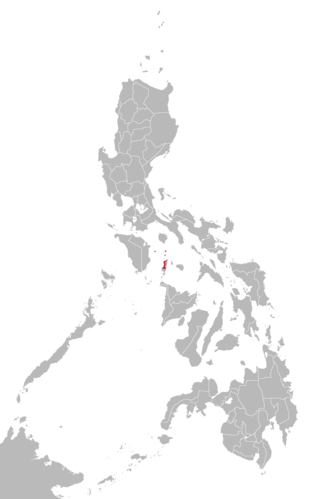
Bantoanon or Asi is a regional Bisayan language spoken, along with Romblomanon and Onhan, in the province of Romblon, Philippines. Asi originated in the island of Banton, Romblon and spread to the neighboring islands of Sibale, Simara, and the towns of Odiongan, San Andres and Calatrava on Tablas Island. The Asi spoken in Odiongan is called Odionganon, Calatravanhon in Calatrava, Sibalenhon in Concepcion, Simaranhon in Corcuera, and Bantoanon in Banton. The Asi language is closer to Western Visayan language like Karay-a than to Cebuano and Waray

The Karay-a language is an Austronesian regional language in the Philippines spoken by the Karay-a people, mainly in Antique.

Hiligaynon, also often referred to as Ilonggo or Binisayâ/Bisayâ nga Hiniligaynon/Inilonggo, is an Austronesian regional language spoken in the Philippines by about 9.1 million people, predominantly in Western Visayas, Negros Island Region, and Soccsksargen, most of whom belong to the Hiligaynon people. It is the second-most widely spoken language in the Visayas and belongs to the Bisayan languages, and it is more distantly related to other Philippine languages.
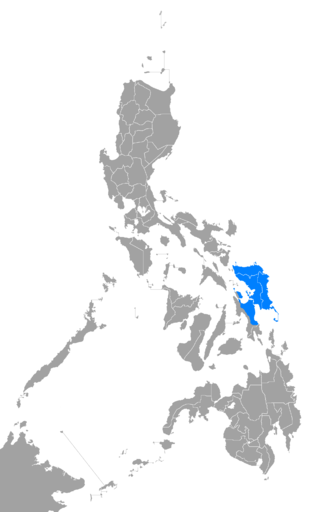
Waray is an Austronesian language and the fifth-most-spoken native regional language of the Philippines, native to Eastern Visayas. It is the native language of the Waray people and second language of the Abaknon people of Capul, Northern Samar, and some Cebuano-speaking peoples of western and southern parts of Leyte island. It is the third most spoken language among the Bisayan languages, only behind Cebuano and Hiligaynon.
R. David Zorc is an American linguist primarily known for his work on Austronesian languages and linguistics, particularly the Philippine languages.
Classical Cebuano, or Spanish-Era Cebuano, was a form of the Cebuano language spoken during the Spanish colonial era of the Philippines. It was the primary language spoken in Cebu, Bohol, and other parts of Visayas and Mindanao.
